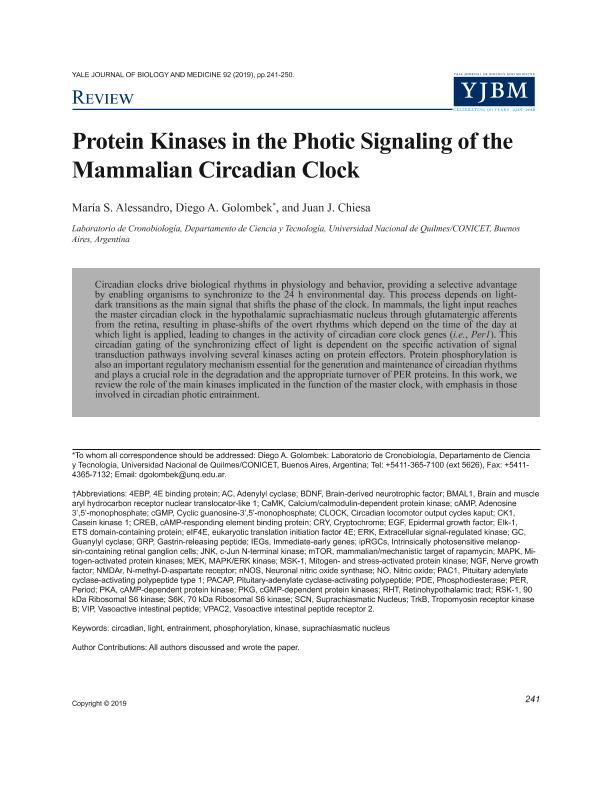Artículo
Protein kinases in the photic signaling of the mammalian circadian clock
Fecha de publicación:
27/06/2019
Editorial:
Yale School of Medicine
Revista:
Yale Journal of Biology and Medicine
ISSN:
1551-4056
Idioma:
Inglés
Tipo de recurso:
Artículo publicado
Clasificación temática:
Resumen
Circadian clocks drive biological rhythms in physiology and behavior, providing a selective advantage by enabling organisms to synchronize to the 24 h environmental day. This process depends on lightdark transitions as the main signal that shifts the phase of the clock. In mammals, the light input reaches the master circadian clock in the hypothalamic suprachiasmatic nucleus through glutamatergic afferents from the retina, resulting in phase-shifts of the overt rhythms which depend on the time of the day at which light is applied, leading to changes in the activity of circadian core clock genes (i.e., Per1). This circadian gating of the synchronizing effect of light is dependent on the specific activation of signal transduction pathways involving several kinases acting on protein effectors. Protein phosphorylation is also an important regulatory mechanism essential for the generation and maintenance of circadian rhythms and plays a crucial role in the degradation and the appropriate turnover of PER proteins. In this work, we review the role of the main kinases implicated in the function of the master clock, with emphasis in those involved in circadian photic entrainment.
Palabras clave:
Circadian
,
Light
,
Entrainment
,
Phosphorylation
,
Kinase
,
Suprachiasmatic nucleus
Archivos asociados
Licencia
Identificadores
Colecciones
Articulos(SEDE CENTRAL)
Articulos de SEDE CENTRAL
Articulos de SEDE CENTRAL
Citación
Alessandro, Maria Soledad; Golombek, Diego Andrés; Chiesa, Juan José; Protein kinases in the photic signaling of the mammalian circadian clock; Yale School of Medicine; Yale Journal of Biology and Medicine; 92; 2; 27-6-2019; 241-250
Compartir




